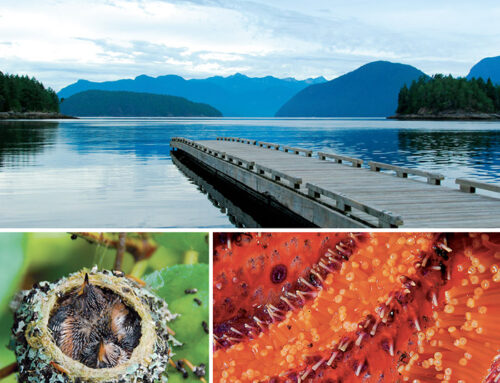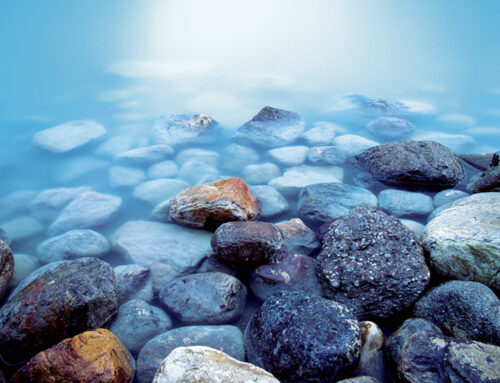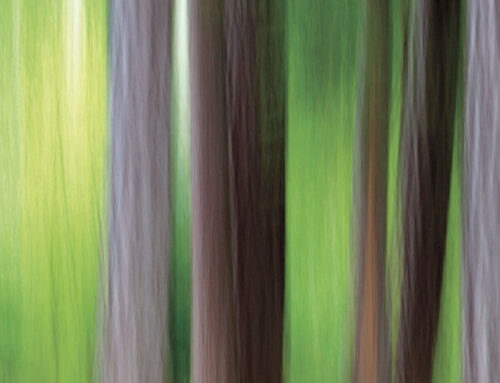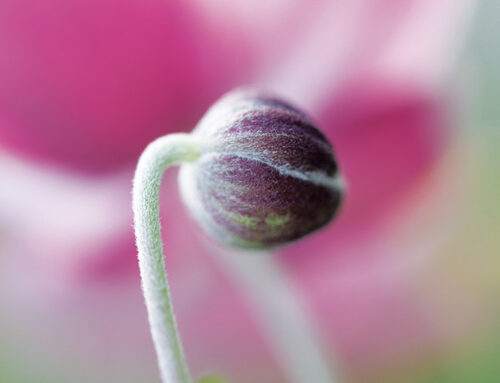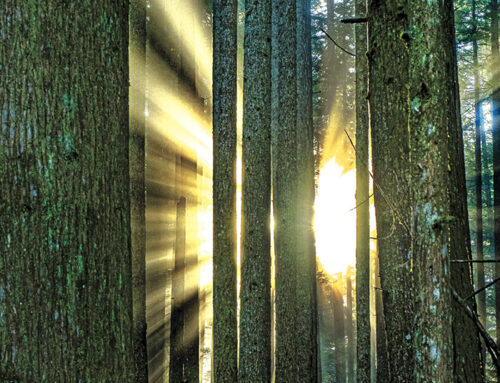Primal, archetypal, a thrilling immersion in another element, diving is both a popular sport and the stuff of our most memorable dreams. The clean, clear, cold water of the Pacific Northwest offers a wide spectrum of diving opportunities, from an easy and simple poke around the pillars of a dock to 22 knots of current in places like Seymour Narrows.
Maxwel Hohn grew up in Pender Harbour and started out like so many of us did, by swimming and snorkelling as a child in our many pristine lakes and protected waterways. While his first official scuba dive was in Utila, Honduras, and he has dived all over the world since (in places like Vietnam, Greece, the Bahamas, Norway, and Tanzania), Hohn maintains that right here, where he grew up, provides opportunities for some of the most exciting diving.
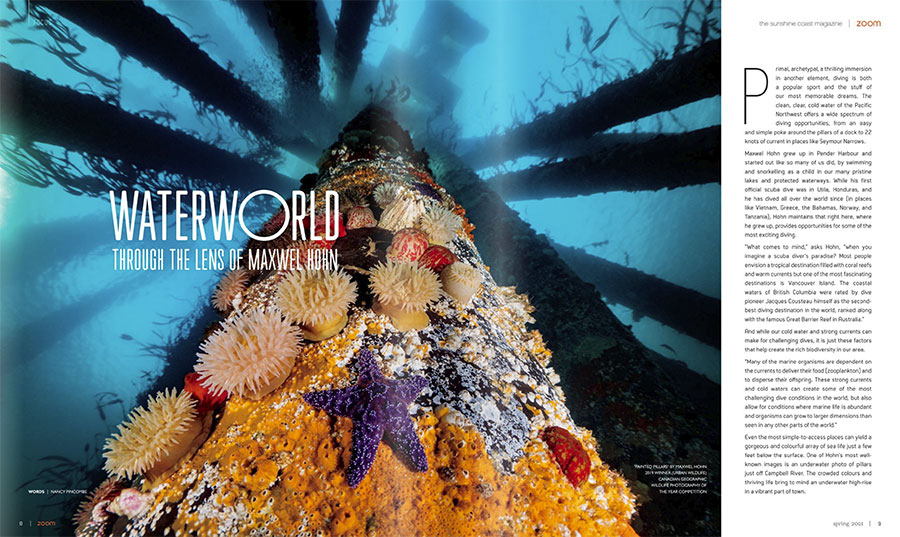
“What comes to mind,” asks Hohn, “when you imagine a scuba diver’s paradise? Most people envision a tropical destination filled with coral reefs and warm currents but one of the most fascinating destinations is Vancouver Island. The coastal waters of British Columbia were rated by dive pioneer Jacques Cousteau himself as the second-best diving destination in the world, ranked along with the famous Great Barrier Reef in Australia.”
And while our cold water and strong currents can make for challenging dives, it is just these factors that help create the rich biodiversity in our area.
“Many of the marine organisms are dependent on the currents to deliver their food (zooplankton) and to disperse their offspring. These strong currents and cold waters can create some of the most challenging dive conditions in the world, but also allow for conditions where marine life is abundant and organisms can grow to larger dimensions than seen in any other parts of the world.”
Even the most simple-to-access places can yield a gorgeous and colourful array of sea life just a few feet below the surface. One of Hohn’s most well-known images is an underwater photo of pillars just off Campbell River. The crowded colours and thriving life bring to mind an underwater high-rise in a vibrant part of town.
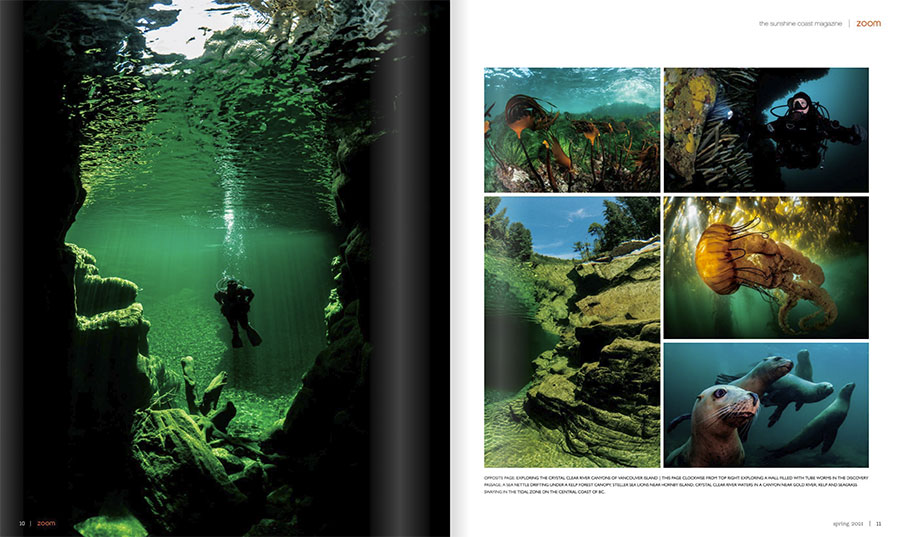
Gooseneck barnacles, sea pens, anemones, sea stars, extraordinarily colourful and diverse nudibranchs, jellyfish, kelp forests undulating gracefully in the currents, curious cavorting sea lions . . . our pristine depths offer countless delights. But what kind of sightings still excite a seasoned diver?
“The most exciting species to see under water is the giant Pacific octopus. They can reach lengths of thirty feet!”
Just as at-home in freshwater, Hohn’s underwater photography includes rivers and lakes and gives us an intimate view of these less-often photographed environments and the biodiversity there.
Hohn’s videography has received a lot of recent attention and has won him many awards. The haunting “Call of the Coastal Wolves” won a 2021 Best Documentary Short Film and Best Nature Travel Film. His absolutely enchanting short film, “Tadpoles: The Big Little Migration,” was tenderly narrated by Hohn himself and shot in a remote Vancouver Island lake over several years. “Tadpoles” won no fewer than eight awards.
The advances in technology have been dizzying in all fields, but perhaps none so drastic as in underwater filming. Hohn says the latest and best is a must.
“I’m an absolute sucker for dive gear and camera equipment. It’s so exciting to see new products and technology progressively improve every year. To be able to work in demanding environments requires the best gear available. I love applying this specialized tech to explore and document the underwater world, weather it’s in freezing conditions, under ice, deep in a cave, or in a tropical paradise. It needs to work and be dependable when I need it to be.”
He is currently filming for several exciting series to be aired on BBC, Netflix, Nat Geo and Disney.


